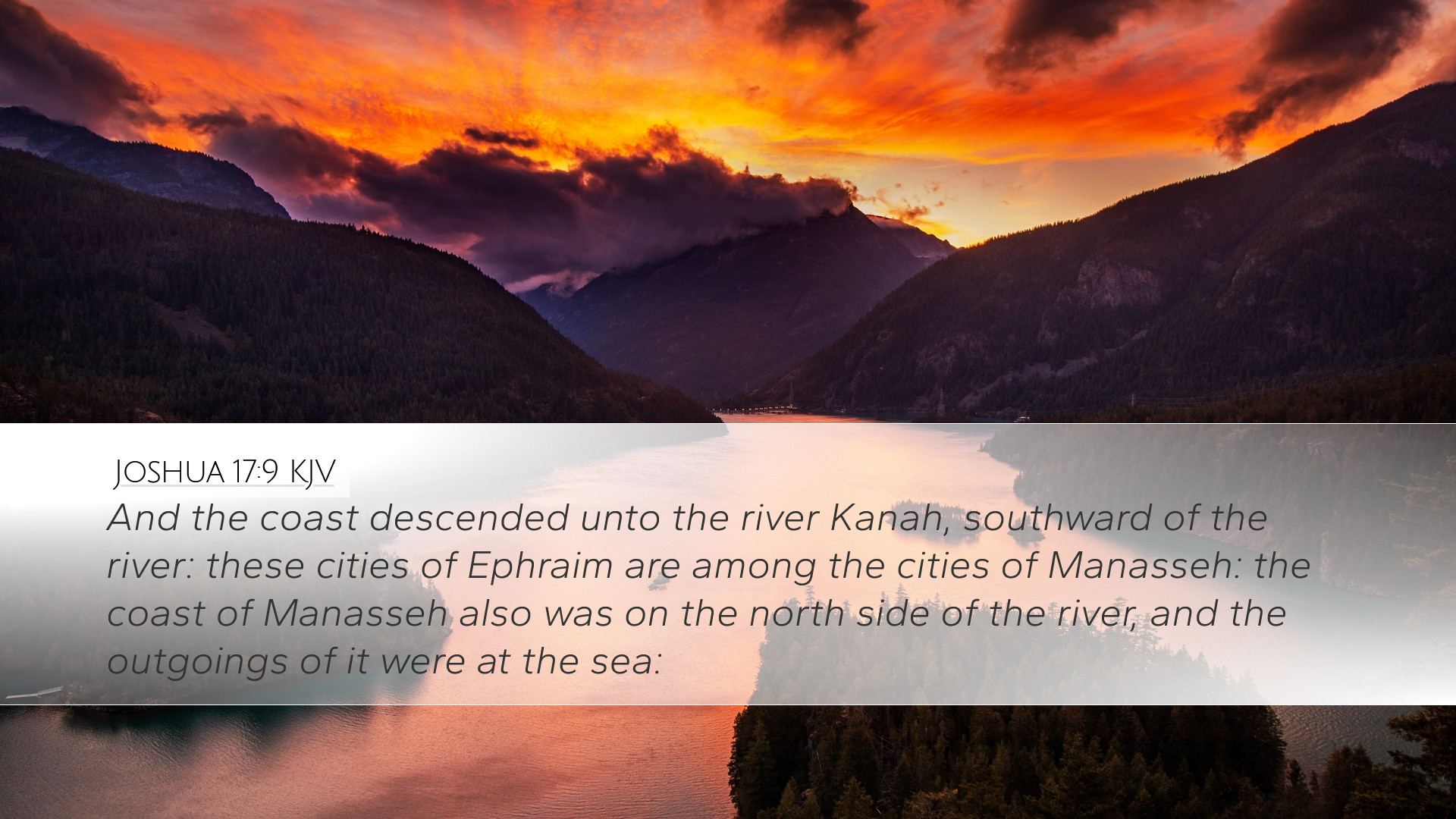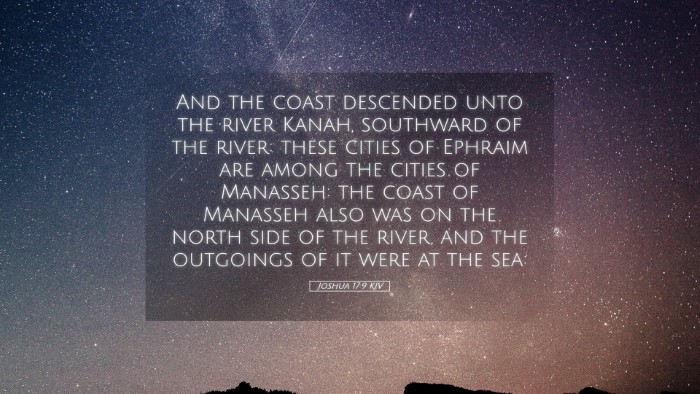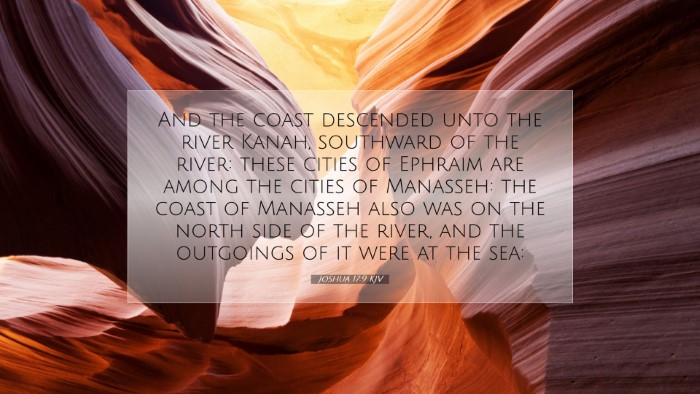Old Testament
Genesis Exodus Leviticus Numbers Deuteronomy Joshua Judges Ruth 1 Samuel 2 Samuel 1 Kings 2 Kings 1 Chronicles 2 Chronicles Ezra Nehemiah Esther Job Psalms Proverbs Ecclesiastes Song of Solomon Isaiah Jeremiah Lamentations Ezekiel Daniel Hosea Joel Amos Obadiah Jonah Micah Nahum Habakkuk Zephaniah Haggai Zechariah MalachiJoshua 17:9
Joshua 17:9 KJV
And the coast descended unto the river Kanah, southward of the river: these cities of Ephraim are among the cities of Manasseh: the coast of Manasseh also was on the north side of the river, and the outgoings of it were at the sea:
Joshua 17:9 Bible Commentary
Bible Commentary on Joshua 17:9
Verse Context: Joshua 17:9 states, “And the border went down unto the river Kanah, southward of the river; these cities of Ephraim are among the cities of Manasseh: the border of Manasseh was on the north side of the river, and the outgoings of it were at the sea.” This verse is situated within the narrative of land allotment to the tribes of Israel, a pivotal moment in their journey into the Promised Land.
Historical Background
The account of the land divisions is crucial for understanding the genealogical and territorial claims of the tribes of Israel. The specifying of borders reflects the fulfillment of God’s promises to the Patriarchs and highlights the importance of land as a symbol of inheritance in biblical theology.
Commentary Insights
-
Matthew Henry’s Commentary
Henry emphasizes the significance of inheritance and how it was divided among the tribes. He comments that the precise description of the borders serves as a reminder of God’s faithfulness in fulfilling His promises. The mention of the river Kanah indicates the clear delineation of territory and reinforces the concept of God's providence in providing for His people.
-
Albert Barnes’ Commentary
Barnes notes the geographical implications of the land division, explaining that the territory of Ephraim and Manasseh was intricately linked due to their close proximity. He highlights that the towns listed within these borders were meant to display the blend of tribal heritage and communal living. This multicultural aspect serves as an invitation to embrace inclusivity within God’s kingdom.
-
Adam Clarke’s Commentary
Clarke provides a detailed explanation of the river Kanah, identifying it as a natural boundary that significantly impacted the lives and governance of the tribes involved. He suggests that the river not only served a practical function but also symbolized the fluidity of divine grace—flowing between the divisions yet encompassing the entirety of Israel's heritage.
Theological Implications
This verse encapsulates deeper theological themes prevalent in the Biblical narrative. The delineation of land serves as a metaphor for spiritual inheritance. Just as the Israelites received their inheritance, believers today are reminded of their spiritual inheritance through Christ, which emphasizes the importance of claiming God’s promises. The distinction between Ephraim and Manasseh can also be viewed as a reflection of the diversity and unity found within the body of Christ.
Application for Pastors and Theologians
Pastors and theologians can draw from this verse and its surrounding context to emphasize the importance of rightful inheritance in spiritual matters. Just as boundaries were established for the tribes, so too should believers establish boundaries of faith and doctrine to uphold the integrity of God's Word. It also serves as a reminder to be inclusive, acknowledging that the church comprises diverse backgrounds yet unified under the same banner of the Gospel.
Conclusion
The study of Joshua 17:9, through the tools of historical understanding and theological reflection, reveals layers of meaning that are profoundly relevant today. As students and scholars reflect upon this text, they are invited to consider the broader narrative of land, identity, and divine promise that governs the entirety of biblical scripture.


